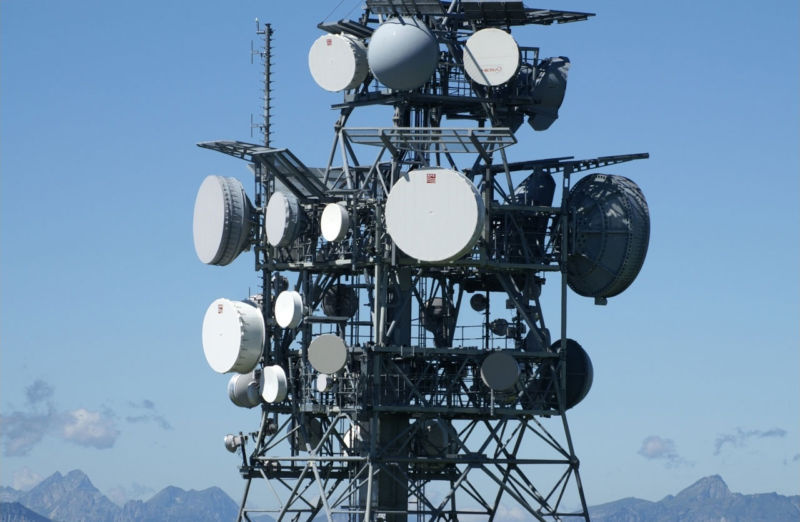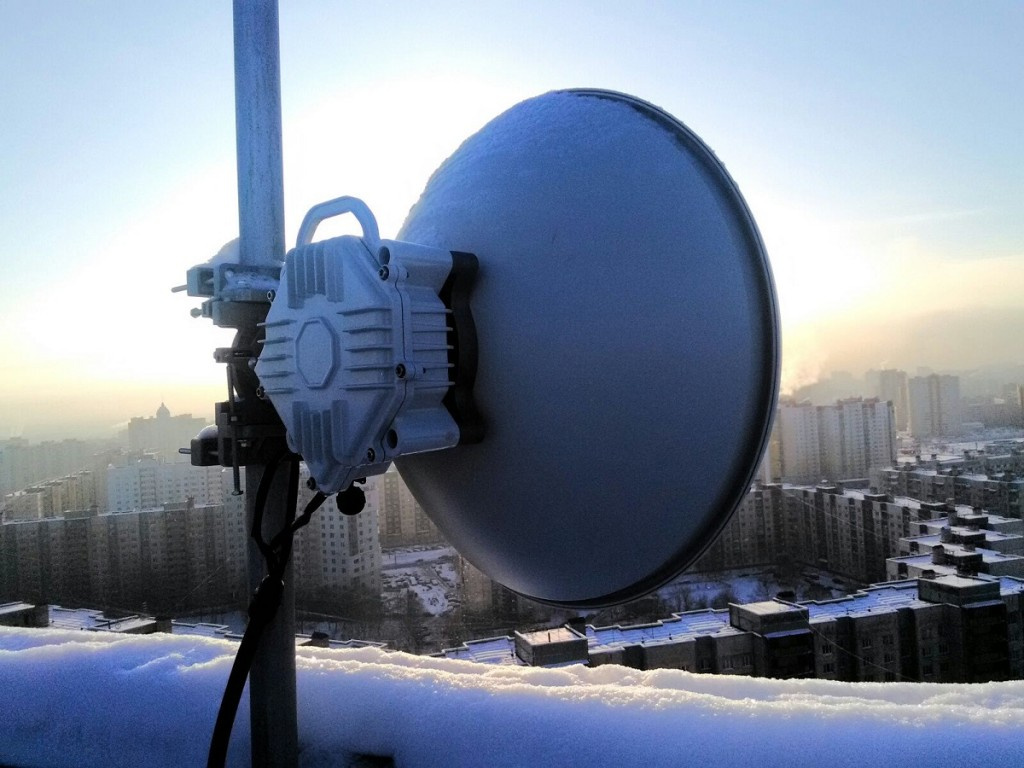Radio Exchange

In commercial telecommunications there are special main communication channels. Their owners try not to advertise their name. As a rule - this is a private microwave radio network with a length of several hundred kilometers. The cost of iron in such networks can reach several tens of millions of dollars. Actually, they are used by financial tycoons to deliver as quickly as possible to transfer to the trading robot on the stock exchange a team to buy or sell stocks, bonds and other assets.
Just one millisecond advantage in the reaction rate of a trading robot on the stock exchange can bring up to hundreds of millions of dollars a year to a large company trading in the securities market. This method is called high-frequency trading - High-frequency trading, HFT. Today it is the main method of working in the securities and finance markets, where technology has become of paramount importance.
The HFT technology strategy is to place the server with the trading robot directly in the data center of the exchange in co-location mode. The robot is already “taught” the methods of trading, but is not able to predict unexpected events affecting the price dynamics in the market. Only an early analysis of such events allows a person to give the robot a command for a particular trading action.
Naturally, to transfer a command to a trading robot, a whole set of technological tools is needed: microwave radio networks, specialized software, servers, network cards and low-delay switches.
In this chain, it is private microwave networks that are used to transmit a message to the broker about a market event, and to quickly transfer the command to the trading robot after analyzing the event.

Map of some microwave networks in the south of England and in continental Europe.
Microwave nets are a kind of Indian semaphore from bonfires on hilltops. The line is divided into many sections with a length from several kilometers to several tens of kilometers. It all depends on the frequency range of the equipment. The equipment for signal transmission is located at reference points — these are any elevations (mast, roof). They are set to 2 radio, looking in a certain direction. Each of them transmits a signal to the next.
Such a data transfer method may seem too complicated with a wide variety of less labor-intensive data transfer methods. However, the price of millisicles on the financial market is very high, and microwave networks allow data to be transmitted at a speed of ~ 300 thousand km / s. This is an order of magnitude higher than the speed of data transmission over fiber (200 thousand km / s).
Radio-relay channels can be built almost in a straight line, and the cable will have to be laid depending on the location of places where it can be laid (wells, bridges, tunnels), which significantly increases its length. Traveling through optics involves processing the signal with network equipment, and it also selects the necessary milliseconds. That is, when the data on the cable get to the exchange will be too late.
Private microwave networks use special microwave equipment designed to transmit signals with minimal delays. For example, conventional commercial radio bridges give a delay of 50 microseconds. The delay on radio bridges for brokers is 1000 times less - 50 nanoseconds.
The number of manufacturers capable of producing and developing Gigabit radio relay equipment of this class is very small. These include our compatriots from the St. Petersburg company “DOC”.
Western millionaire radio lines
In Europe, the construction of commercial radio relay networks required for trading on the stock exchange is developing quite rapidly.

British microwave network in 1956
At the beginning of this year in the English county of Kent, permission was granted for the construction of 300-meter towers on the shores of the English Channel. The towers were needed by two American traders to continue the new microwave radio link between the exchanges of Frankfurt and London, and spend fabulous sums to gain a few milliseconds for their trading robots.
In total in the UK for HFT trade accounts for more than 750 licenses in the radio frequency spectrum. In this market, there is even competition between telecommunications companies. Even more fantastic is the situation in the US, where dozens of private microwave networks connect the financial centers of Chicago and New York, and each new network marks another breakthrough in reducing the time for a signal to pass. The total investment in such networks between the two exchanges experts estimate at half a billion dollars.
Russia
In Russia, unfortunately, everything is more prosaic. At the same time, Russian traders actively apply high-frequency trading methods on the Moscow Exchange, placing equipment in the data center of the exchange trading system. However, microwave networks have not yet received distribution in Russia.
There are a number of objective reasons for this, including a small volume of trade operations, as well as an enormous distance from European and American stock exchanges, which makes it impossible to build a microwave radio relay circuit.
Therefore, our traders have to resort to optical communication channels. For example, the London-Stockholm-Moscow optical channel (MSK-IX) is in great demand in Russia.
Alexander Gerasimov, director for analysis of IT and cloud services markets of consulting company J “son & Partners Consulting, believes that private microwave radio networks are not yet in demand in Russia:
“Ultra-low latency telecom equipment certainly plays an important role in HFT trading. However, with today's trading volumes on the Moscow Stock Exchange for specific players, it is cheaper for them to fulfill all the must-do rules for placing servers in the data center of the exchange, and further focus on improving their software algorithmic trading. Private microwave radio networks are costs that are of a different level, and for their expediency, all other ways to reduce delays in the analysis and transmission of data must first be exhausted. "

Philip Ivanov, director of the St. Petersburg Dok Company, which produces ultra-low latency radio links, commented on the possible cost of a radio bridge between Moscow and St. Petersburg:
“Infrastructure projects in Russia are rarely cheaper than in the West. About 650–700 km will require about 120 sets of 70/80 GHz radio bridges, each of which costs about 1 million rubles. Add the cost of design, coordination, infrastructure in the form of communication masts and power, the cost of installation work. It is unlikely that all this will exceed the cost of radio bridges by 2-3 times. In total - in the range of 300-500 million rubles. I also want to emphasize that all this is being done for the sake of a difference of a few milliseconds between the time of passage of a radio signal and a signal through optics at a distance of 650 km. Here we need very thorough design and full-scale experiments with the selected equipment to confirm the attainability of such indicators. ”
Technology has a tremendous impact on stock trading, where the price of many millions equals fractions of a second. Radio communication plays a huge role in technological wars of financial movers.
All Articles